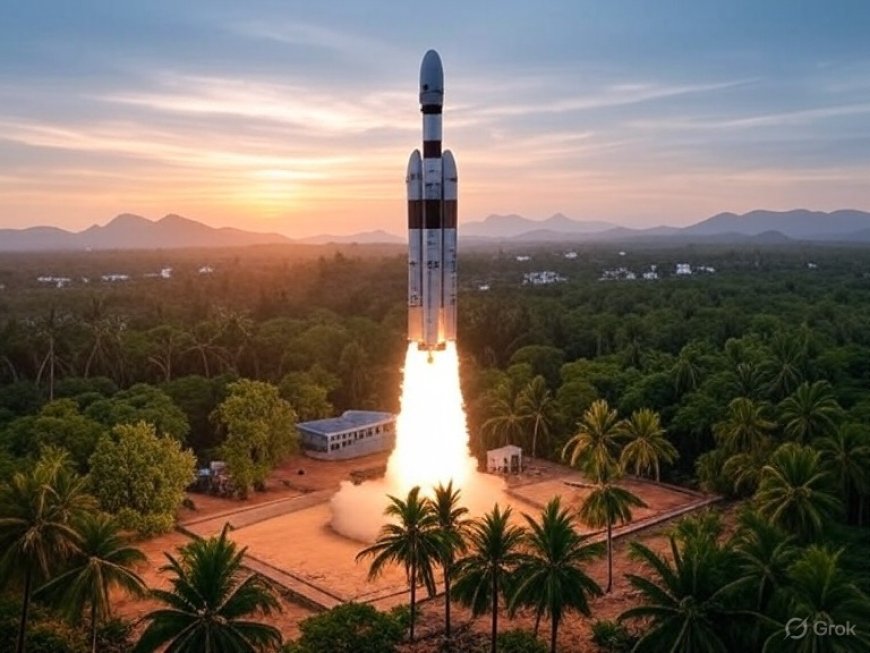India’s Big Leap to Venus: How ISRO's Shukrayaan Mission Could Redefine Global Space Science
ISRO's Shukrayaan-1 Venus mission marks a major leap in India's planetary exploration and international space collaboration. Here's what it means for global science.

By Ronald Kapper
In a bold step toward exploring the mysteries of our planetary neighbors, the Indian Space Research Organisation (ISRO) is preparing to launch its long-anticipated mission to Venus, aptly named Shukrayaan-1. While India's space agency has steadily gained global respect through its cost-effective, high-impact missions like Chandrayaan and Mangalyaan, this upcoming endeavor marks a deeper dive into interplanetary science—and opens up crucial opportunities for international collaboration and scientific advancement.
Why Venus, and Why Now?
Venus, often dubbed Earth's "sister planet" due to its similar size and proximity, remains an enigma. Despite its hostile surface conditions—think 470°C temperatures and crushing atmospheric pressure—scientists believe that unlocking Venus's secrets could shed light on planetary evolution, climate change, and even astrobiology.
Dr. Anil Bhardwaj, Director of the Physical Research Laboratory, one of the leading institutions behind the mission, emphasized in an interview that “Venus is like a laboratory for studying runaway greenhouse effects. Understanding its atmosphere could help us better grasp Earth’s climate trajectory.”
Inside ISRO’s Shukrayaan-1 Mission
Expected to launch by 2026, Shukrayaan-1 will carry a suite of scientific instruments designed to study the Venusian atmosphere, surface composition, and subsurface activity. Key goals include:
-
Mapping surface emissivity using infrared imaging.
-
Studying the chemical composition of the thick cloud layers.
-
Investigating seismic activity through radar sounding.
What sets Shukrayaan apart is its focus on both atmospheric chemistry and geological features, a dual approach rarely seen in past missions to Venus.
🔗 Learn more about Shukrayaan from ISRO’s official mission brief
A Gateway to Global Collaboration
One of the standout features of Shukrayaan-1 is the wave of international partnerships it is facilitating. Agencies such as NASA, CNES (France), and JAXA (Japan) are contributing instruments or expertise to the mission.
Notably:
-
NASA’s Jet Propulsion Laboratory (JPL) has proposed a radar system to map Venus’s surface with high resolution.
-
France’s CNES has confirmed interest in contributing a gas analyzer for Venus's dense atmosphere.
-
Germany's DLR may assist in thermal mapping, drawing from its prior Venus Express experience with ESA.
These partnerships aren't just technical—they're symbolic. ISRO is being recognized as a serious player in interplanetary science, no longer just the "low-cost launcher" of the past.
A Pattern of Rising Influence: From Mangalyaan to Chandrayaan-3
India’s planetary missions have increasingly attracted global attention. The Mars Orbiter Mission (Mangalyaan), launched in 2013, was a triumph—executed at one-tenth the cost of NASA's Maven and completing its mission objectives despite budgetary constraints.
Fast forward to Chandrayaan-3, which successfully landed on the Moon’s south pole in 2023—an area unexplored by any other country. These achievements showcase India's unique strength: delivering high-quality science on a constrained budget, a capability now sought after by many spacefaring nations.
Strategic and Scientific Implications
Shukrayaan-1 is not merely a scientific mission—it has strategic implications as well:
-
Regional space leadership: As China accelerates its space program and prepares for its own Venus missions, India’s leap signals a readiness to lead in Asian space science.
-
Commercial opportunities: With India's growing private aerospace sector, led by players like Skyroot Aerospace and Agnikul Cosmos, this mission might open new avenues for commercial payload delivery and R&D contracts.
-
Climate and Earth science impact: Venus serves as a planetary case study for extreme climate change scenarios, offering insights that could inform Earth's environmental policies.
🔗 Explore how ISRO's climate research benefits India and the world
What’s Next?
As the countdown to 2026 begins, Shukrayaan-1 is generating excitement within India's scientific community and beyond. While the mission’s timeline may evolve due to technical or logistical factors, the direction is clear: India is no longer catching up in planetary science—it’s contributing to the front lines.
From sending a spacecraft to Mars on its first attempt to planning an ambitious mission to Venus, ISRO is turning its “frugal innovation” model into a globally relevant science strategy.
The Venus mission is more than a launch—it’s a statement of intent, a commitment to scientific collaboration, and a step toward reimagining humanity’s future among the stars.











